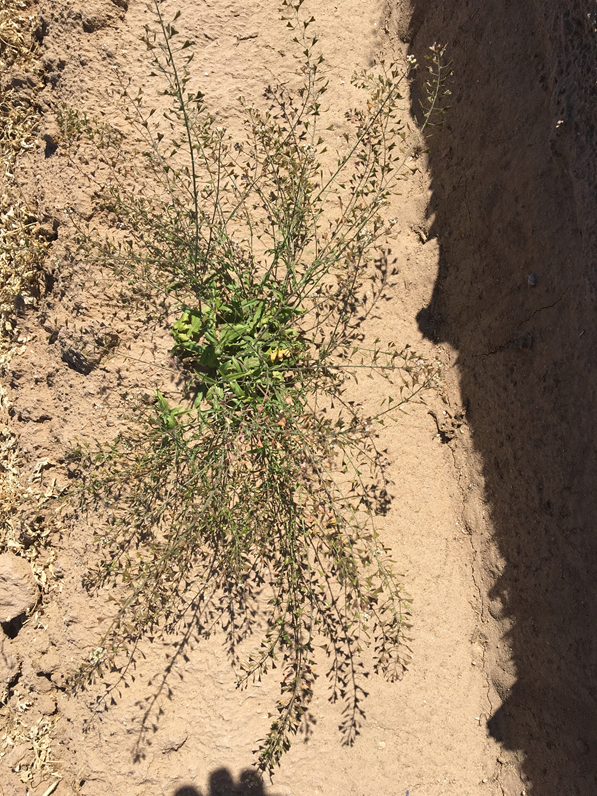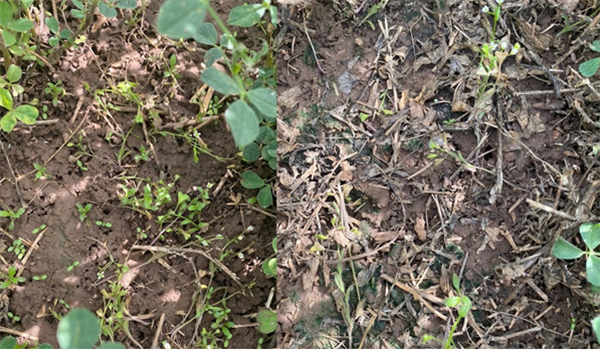We have seen abundant Shepherdspurse recently in Yuma, AZ. Most of us are familiar with this winter annual broadleaf weed but we are adding a brief description:
Scientific name: Capsella bursa – pastoris
Season: Winter Annual
Habitat: Present in all crops and ditch banks, home gardens.
Cotyledons: Oval with a short petiole.
Leaves: First true leaves with hairs and spoon shape. Can have different shapes and form a rosette soon after emergence.
Young plants: Are mostly basal rosettes.
Mature plants: grow up to 20” with flower stems with sparse small leaves.
Flowers and Fruit: Flowers are pale pink and fruits are heart shaped or triangular seed pods.
Shepherdspurse is from the mustard or crucifer family, which includes many crops grown here such as broccoli, cauliflower, kale, kohlrabi, mustard greens and others.
In our production practices we commonly select some weed species that survive our methods of control. This weed has been around for a long time and has become increasingly widespread in recent years. The similarities with brassica crops add to the difficulty to control the weed as well as plant characteristics and growth habits.
In vegetables, Kerb can control shepardspurse when the product placed in the seed germination area close to the surface. If the product leaches the efficacy decreases. Dacthal, Prefar, Prowl, and Balan are less effective on this weed1.
Shepherspurse has proliferated in alfalfa recently and we are conducting some trials for its control. The results will be shared with PCAs and posted in our website when we finish collecting the data.


Fig 1. Images of an untreated plot compared to Raptor + Pursuit + Butyrac 200 +
NIS in alfalfa 4DAT.
Reference:
1.https://ag.arizona.edu/crops/vegetables/advisories/more/weed31.html
2.https://ipm.ucanr.edu/PMG/WEEDS/shepherdspurse.html#:~:text=Mature%20plant&text=Leaves%20vary%20in%20shape%20and,reduced%20in%20size%2C%20and%20stalkless.





